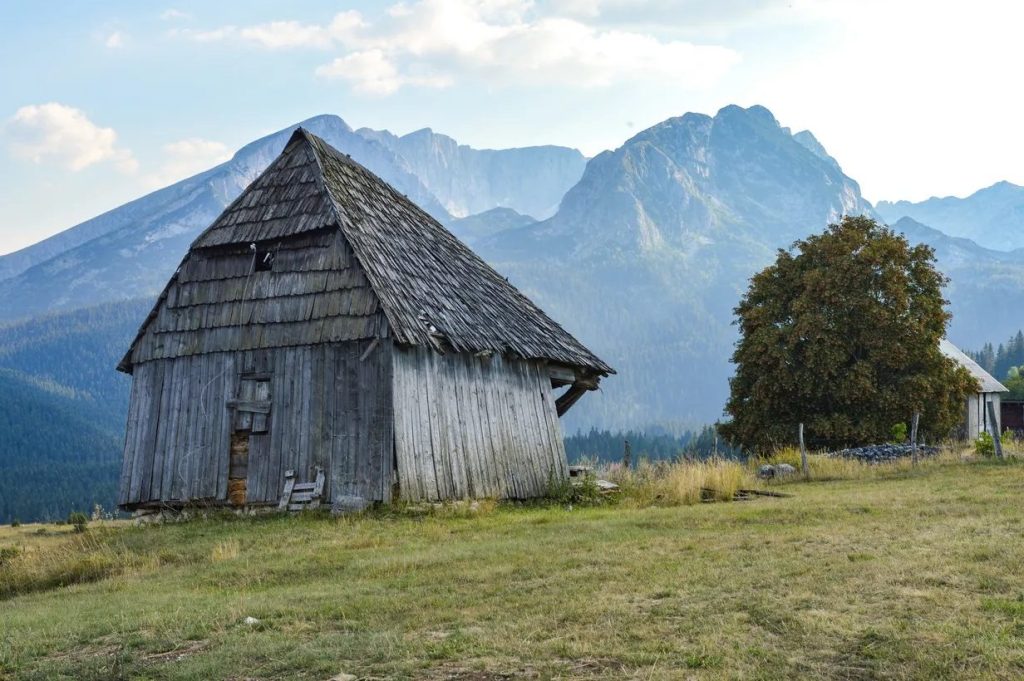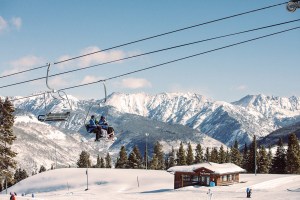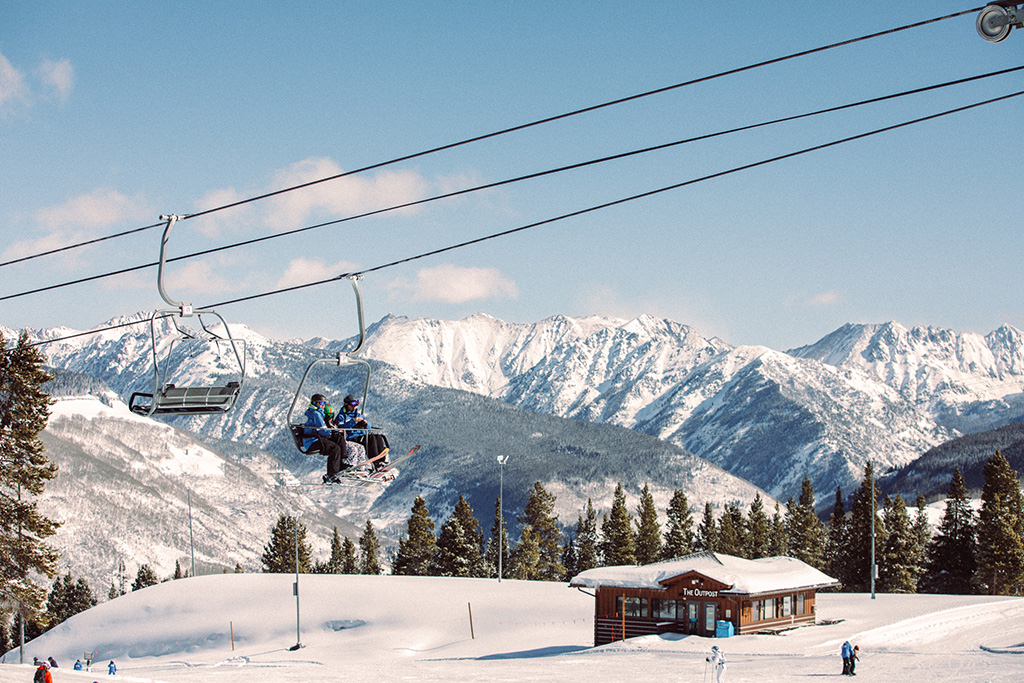How many Spectator readers are aware that tiny Montenegro, that silver sixpence of south-east Europe, so long lost in the jumbled purse of geopolitics, has some of the deepest canyons in the world? Not many, I’d bet — we know the luscious Montenegrin Mediterranean coast, if we know anything. And I’d wager even fewer know that one such abyss, the Tara River Canyon, is one of the fastest watercourses on the continent. I’d imagine no one at all, including me until five seconds ago, knows that the longest stretch of rapids on this giddying torrent is called Borovi.
It’s like Utah hooked up with Iceland, somewhere in Sicily, and brought a friend from Dartmoor
I only know this because I’ve just fallen in. It’s been a while since I have come a cropper canoeing, but this is a proper dunking. I can report that falling in the Borovi rapids on the Tara River in northern Montenegro is like being a terrified sock stuck in an out-of-control tumble dryer, only much colder and wetter. For a moment I wonder if I am going to die, thereby abjectly failing, on day one, in my attempt to explore the little-known interior of Montenegro. But then Petar, the Bosnian canoe guide, fishes me out, steadies my nerves, and we paddle towards home in the glittering sun.
I’m staying in Grab Eco Camp, a good starting point for any exploration of the Montenegrin wilds. At Grab camp, everything is laissez-faire. You sit on wooden benches on a charmingly boho-rustic deck by the Tara, which besides being fast and cold is maybe the world’s cleanest river — a pale green-emerald-blue I have only seen once before in the Pindus Mountains of northeast Greece. This really is one of the most brilliantly neglected corners of the world.
Dinner is casually served from metal trays like slightly drunken army catering between 8 and 8:30 p.m. There’s also no choice — it’s meat and two vegetables, but it is actually very good (unless you’re vegan). It is exactly the tasty, homely, substantial food you want — if you’ve been kayaking, climbing, zip-wiring, canoeing, hiking, mountain biking, which is pretty much the only reason to come here — apart from the sheer loveliness of the place, the slant sun shining on the limestone crags, turning them into portraits of The Sublime, like those pioneer paintings of the Hudson Valley’s exaggerated beauty.
The entire region is often snowbound from November to April when it becomes a deserted, icy world; during the summer it is a mix of Polish, German, French, and some intrepid British kayakers. If you’re the sociable type, they have a red brazier fire in the evening — it attracts the more garrulous explorers and fends off the mosquitoes.
Many go to bed early, though, because it’s all about getting up for the action. Me, I do the same, because at dawn I’m heading past the secretive old monasteries and the Bosnian frontier posts, into Durmitor National Park. This route takes me down the chasm of the Piva Gorge, which is like the Grand Canyon on crack. It doesn’t quite look real. It looks tremendous. Be careful of the blasé local drivers who don’t seem to care if they die — be even more careful of the wildly distracting views. The roads are narrow.
How to describe this astonishing landscape? It’s like Utah hooked up with Iceland, somewhere in Sicily and brought a friend from Dartmoor. Burnt brown plains rise to savage heights, the road snakes into the smoky mega-distance, and you wonder how a nation as tiny as Montenegro can encompass such grandeur. And then you happen upon a kind of Balkan Stonehenge. Pale white stony blocks arrayed on a numinous hilltop, with the Accursed Mountains behind, and the blue remembered hills in front. It is magnificent frozen theater.
These stones are the stecci, deeply mysterious “warrior-tombs” dating possibly from the thirteenth to fifteenth centuries. They are found all over the Balkans; this outcrop on the Durmitor slopes is one of the noblest examples. Stecci are often inscribed with strange pre-Christian symbols: sun-disks, wheels, running deer, which has led some experts to speculate that they are far more ancient than we realize, and that their uncanny resemblance with the great megaliths — Stonehenge, Castlerigg, Carnac — is no accident at all.
You’re unlikely to solve this puzzle on one holiday, but a good place to mull it over is Zabljak, a tumbledown, youthful, cheery Montenegrin skiing town (with exquisite glacier lakes nearby) which feels like a gritty Soviet holiday resort that, paradoxically, very recently came into a grand inheritance.
From here I spear south, avoiding the trafficky concrete sprawl that is the Montenegrin capital, Podgorica, and instead stop off at the charmingly quaint old capital of Montenegro, Cetinje. With its dinky red palaces and dainty blue embassies and its green monastic parks and sleepy grid of pretty streets dotted with languid brasseries, Cetinje — the royal seat from about 1500 to 1940 — is splendidly Ruritanian. It is also a fine stopping point if you want to head west, towards Skadar.
Ah, Skadar. The biggest lake in the Balkans, full of carp and trout (eat them at lakeshore restaurants) — Lake Skadar is the birthplace of Montenegrin identity. The very first national capital was here — long ago turned to ruins — and the nation was reborn here after the Balkan War of 1912, when the Christians finally expelled the Ottomans.
In my hotel, the grandson of the hotel owner proudly shows me the weapons his great-grandfather seized in that same war — after he sailed back from America to answer his king’s ardent plea to battle the Turk. The family was given the land on which that same hotel now sits as a reward for victory, and since then they’ve made vaguely drinkable wine and quite fantastic plum brandy, rakija, which you will definitely be asked to share.
Happy and content, I take my drink out into the sun, gazing over the lakes, up towards the mountains, remembering my tumble in the Tara. It is like remembering a cracking one-night stand: I feel gratitude for being alive, a definite but fugitive joy, and already a wistful yearning to do it again. Yes, you read it here first: touring inland Montenegro is like unexpectedly good casual sex. You really won’t regret it.
Sean traveled with Regent Holidays (www.regent-holidays.co.uk). Regent offers an eight-day Montenegro Fly Drive vacation from $1,650 per person sharing. The price includes return flights with Easyjet to Tivat, Montenegro: see www.easyjet.com. This article was originally published on The Spectator’s UK website.

























